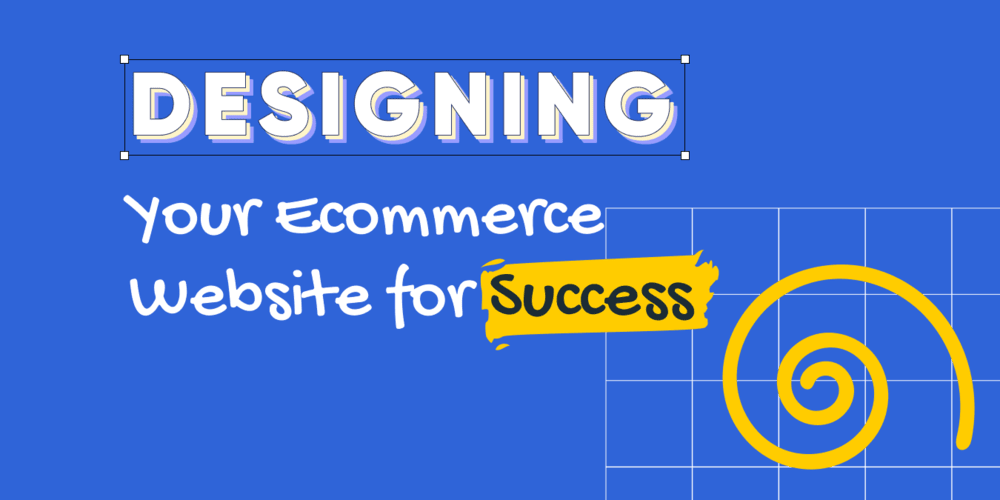Introduction
The digital marketplace is bustling with competition, making it crucial for your e-commerce site to stand out. Crafting an online store that captivates visitors and turns them into loyal customers requires more than just an eye-catching design. It demands a strategic approach to design and functionality to enhance the user journey, drive sales, and elevate brand visibility. This guide will provide you with actionable insights into the essential elements of e-commerce design, equipping you with the tools needed to elevate your online store.
The Essentials of E-Commerce Design
- Craft an Unforgettable User Experience
The user experience is at the core of a successful e-commerce site. Here’s how to make your site welcoming and easy to use:
- Simplify Navigation: A clear and organized site is essential for a smooth shopping experience. Structure your categories logically, such as “Electronics,” “Clothing,” and “Home Goods,” with subcategories like “Smartphones” or “Men’s Jackets” to refine searches. Incorporate a powerful search bar with autocomplete to help users find products quickly.
- Ensure Mobile-Friendly Design: Given that a significant portion of online shopping happens on mobile devices, your site should adapt seamlessly to various screen sizes. Use a responsive design framework to adjust your layout for mobile devices, featuring a simplified menu and larger touch-friendly buttons.
- Speed Up Load Times: A fast-loading site keeps customers engaged. Compress images without sacrificing quality, minimize JavaScript and CSS files to enhance loading speeds, and use content delivery networks (CDNs) to ensure swift access from around the globe.
- Create a Visually Stunning Storefront
Visual appeal plays a critical role in attracting and retaining customers:
- Invest in High-Quality Images: Use professional photography to showcase your products in detail. High-resolution images allow customers to see fine details and make informed decisions. Features like zoom and 360-degree views can offer a comprehensive look at your products.
- Maintain Consistent Branding: Your e-commerce site should reflect your brand’s identity. Choose colors and fonts that align with your brand’s logo and overall aesthetic. If your brand is known for vibrant colors, integrate them into your design to reinforce brand recognition.
- Utilize White Space Effectively: Strategic use of white space enhances readability and helps focus attention on key elements. Avoid clutter by spacing out images, text, and other components to create a clean, organized layout that improves the user experience.
- Boost Conversions with Strategic Elements
Turning visitors into buyers involves thoughtful design choices:
- Design Eye-Catching CTAs: Your calls-to-action (CTAs) should be prominent and encourage immediate action. Use contrasting colors for buttons and place them strategically throughout your site. For example, a “Buy Now” button should be visible on product pages, while a “Sign Up for Discounts” CTA could appear in a pop-up or on the homepage.
- Showcase Customer Reviews: Displaying reviews and ratings can influence buying decisions. Highlight customer feedback on product pages and include a section where users can leave their own reviews. Positive testimonials build trust and demonstrate your products’ quality.
- Simplify the Checkout Process: A complex checkout process can lead to abandoned carts. Streamline the procedure by reducing the number of steps and offering guest checkout options. Ensure form fields are easy to complete and provide clear progress indicators. Also, offer various payment options, such as credit cards, PayPal, and digital wallets, to accommodate different user preferences.
- Enhance Visibility with Smart SEO Practices
Attracting traffic to your site requires effective SEO strategies:
- Perform Keyword Research: Use tools like Google Keyword Planner or SEMrush to find relevant keywords for your products. Integrate these keywords into product titles, descriptions, and meta tags. For example, if you sell running shoes, use keywords like “best running shoes” and “buy running shoes online” to improve your search rankings.
- Write Engaging Meta Descriptions: Meta descriptions are snippets that appear in search engine results beneath your page titles. Craft concise and compelling descriptions that include primary keywords and encourage users to click through. For example, for a page selling eco-friendly water bottles, a meta description might be, “Discover eco-friendly water bottles made from sustainable materials. Stylish, durable, and perfect for hydration on the go.”
- Use Descriptive Alt Text for Images: Alt text helps search engines and visually impaired users understand your images. Write detailed, keyword-rich alt text for each image. For example, for an image of a blue leather handbag, use alt text like “Blue leather handbag with gold hardware – stylish and versatile.”
- Utilize Analytics and A/B Testing for Continuous Enhancement
Ongoing improvements are key to a successful e-commerce site:
- Monitor Performance with Analytics: Tools like Google Analytics provide insights into user behavior, traffic sources, and conversion rates. Track key metrics such as average session duration, bounce rate, and cart abandonment rate. For instance, a high bounce rate on product pages might indicate issues with the page design or content.
- Conduct A/B Testing: A/B testing compares two versions of a page to determine which performs better. Experiment with different elements like CTA buttons, product images, or page layouts to find what drives more engagement and sales. For example, test different colors for CTA buttons to see which one results in higher click-through rates.
Conclusion
The digital marketplace is highly competitive, and creating an effective e-commerce site involves more than just an attractive design. It’s about crafting a user journey that’s intuitive, engaging, and geared toward conversions. By focusing on user experience, visual appeal, strategic elements, SEO, and continuous enhancement, you can create an online shopping experience that stands out. For expert guidance and exceptional results in e-commerce design, visit MDA Website, where our team is dedicated to helping you build a site that thrives in today’s competitive market.
